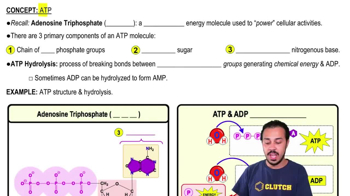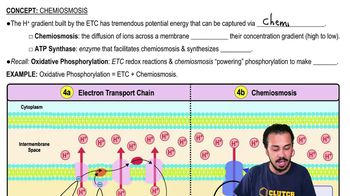Textbook Question
Most CO2 from catabolism is released duringa. glycolysis.b. the citric acid cycle.c. lactate fermentation.d. electron transport.
4158
views

 Verified step by step guidance
Verified step by step guidance Verified video answer for a similar problem:
Verified video answer for a similar problem:



 7:51m
7:51mMaster Review of Aerobic Cellular Respiration with a bite sized video explanation from Bruce Bryan
Start learning